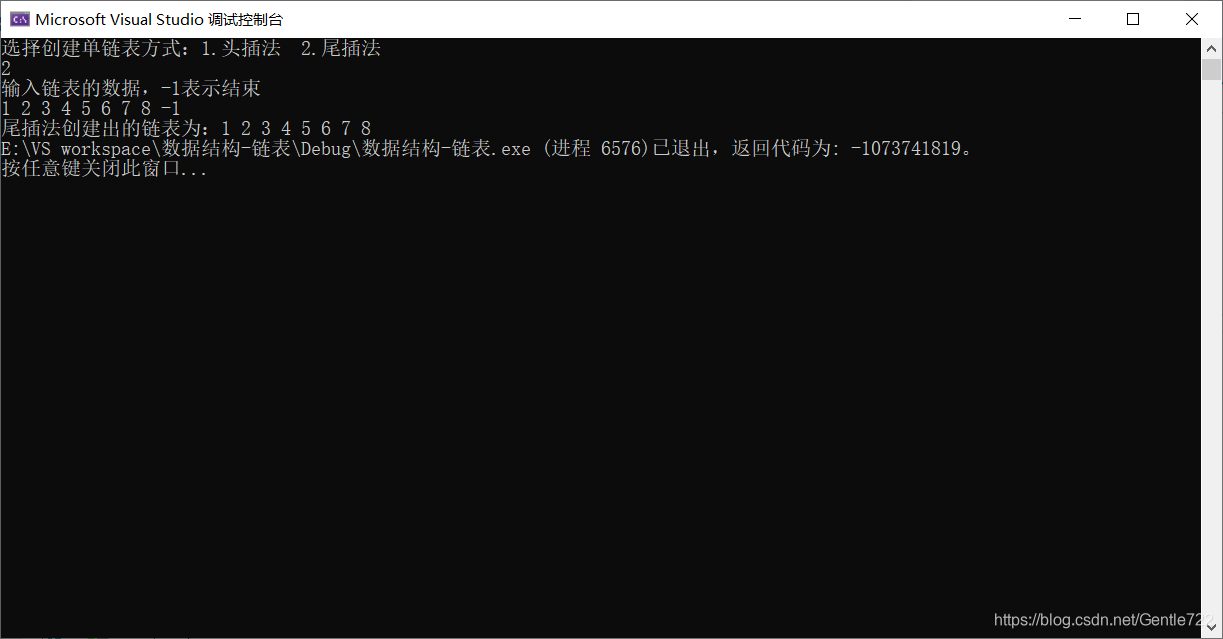单链表的插入操作,包括头插和尾插,两种的时间复杂度都为O(n)。
/*
单链表插入操作(头插+尾插)
*/
#include<iostream>
#include<malloc.h>
using namespace std;
//定义结点数据类型
typedef int Elemtype;
//结点定义
typedef struct LNode {
Elemtype data;
LNode* next;
}LNode, * Linklist;
//单链表的初始化
Linklist initList() {
Linklist L;
L = (Linklist)malloc(sizeof(LNode));
L->next = NULL;
return L;
}
//头插法
void headInsert(Linklist& L) {
Linklist p;
p = (Linklist)malloc(sizeof(LNode));
cout << "输入链表的数据,-1表示结束" << endl;
cin >> p->data;
while (p -> data != -1) {
p->next = L->next;
L->next = p;
p = (Linklist)malloc(sizeof(LNode));
cin >> p->data;
}
}
//尾插法
void tailInsert(Linklist &L) {
Linklist p,end;//end表示尾指针
end = L;
p = (Linklist)malloc(sizeof(LNode));
cout << "输入链表的数据,-1表示结束" << endl;
cin >> p->data;
while (p->data != -1) {
p->next = end->next;
end->next = p;
end = p;//尾指针向后移
p = (Linklist)malloc(sizeof(LNode));//重新分配内存
cin >> p->data;//继续增加结点
}
end->next = NULL;
}
//打印链表
void printList(Linklist& L) {
Linklist p;
p = L->next;
while (p) {
cout << p->data << " ";
p = p->next;
}
cout << endl;
}
int main()
{
Linklist L = initList();
cout << "选择创建单链表方式:1.头插法 2.尾插法" << endl;
int s;
cin >> s;
if (s == 1) {
headInsert(L);
cout << "头插法创建出的链表为:";
printList(L);
}
else if (s == 2) {
tailInsert(L);
cout << "尾插法创建出的链表为:";
printList(L);
}
else {
cout << "出错" << endl;
}
return 0;
}
运行结果

